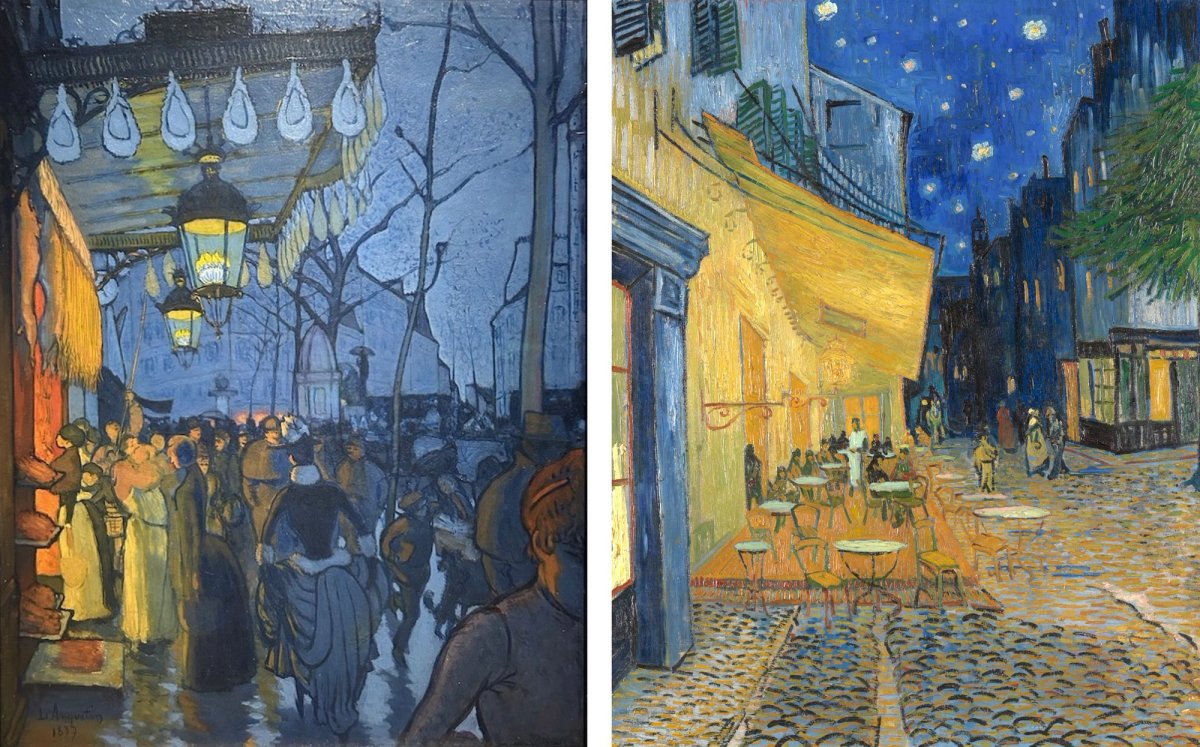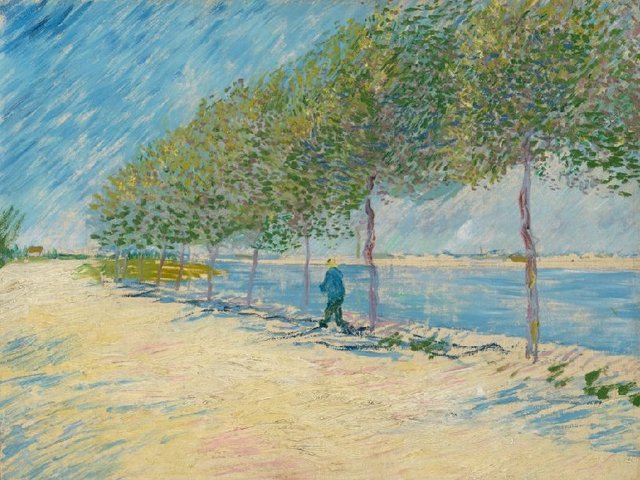Van Gogh’s powerfully coloured Terrace of a Café at Night was inspired by a painting by Louis Anquetin, one of his fellow avant-garde artists in Paris. Anquetin’s picture from the Wadsworth Atheneum museum in Hartford, Connecticut, has just arrived in London, where it is on display in the National Gallery’s After Impressionism: Inventing Modern Art exhibition (until 13 August).
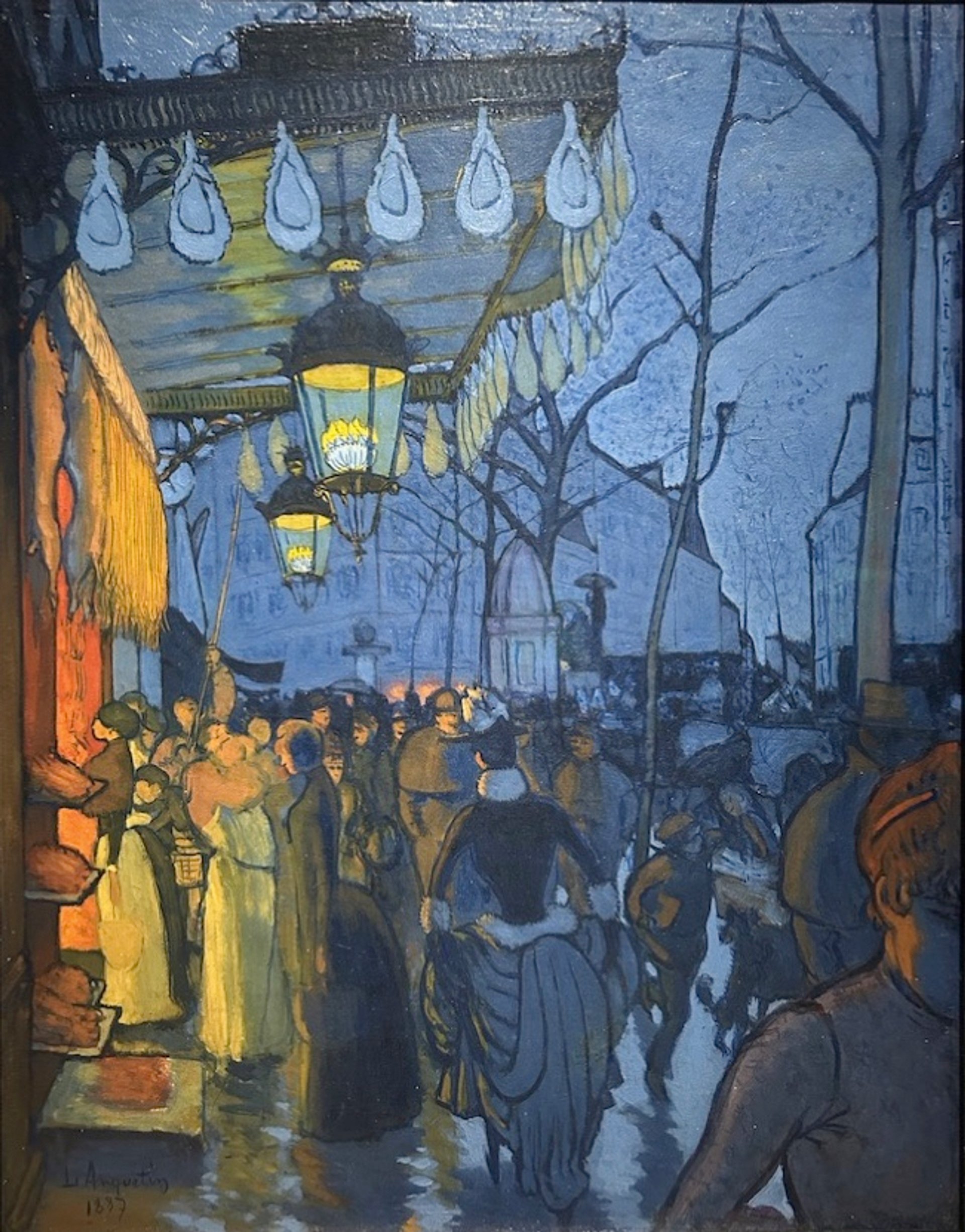
Louis Anquetin’s Avenue de Clichy (Five O’clock in the Evening) (late 1887)
Credit: Wadsworth Atheneum, Hertford, Connecticut (Ella Gallup and Marty Catlin Summer collection funds)
Avenue de Clichy, painted by Anquetin in late 1887, when he was 26, was certainly known by Van Gogh. The two artists had met when they were studying at Cormon’s studio, a year earlier, and they had become friends. Anquetin exhibited his painting in a display organised by Van Gogh in the Restaurant du Chalet in November-December 1887. Sadly, the customers of this working-class restaurant scorned their unconventional art.
Anquetin’s oil painting was a revolutionary work, partly because of its cropped female head in the lower-right corner and its dramatic colouring, with the warm tones of the gaslight contrasting with the stark blues of the twilight scene. Van Gogh had introduced Anquetin to Japanese prints, which would inspire the cropping. And it was Anquetin’s colouring which in turn provided inspiration for Van Gogh.
Although at first glance Anquetin’s Parisian scene might appear to depict the exterior of a busy café, it was actually a butcher’s shop (which was just a few doors away from the Restaurant du Chalet). The row of objects hanging from the canopy are not festive decorations, but hams for sale. The illuminated items at the entrance are probably pig carcasses.

Van Gogh’s Terrace of a Café at Night (Place du Forum) (September 1888)
Credit: Kröller-Müller Museum, Otterlo
Van Gogh’s Terrace of a Café at Night (September 1888) was painted about ten months after the Anquetin picture, while he was living in Arles. The nocturnal scene depicts the Grand Café du Forum, then at 11 Place du Forum. When the American writer Henry James visited Arles in 1882 he had been dismissive of the square, in the centre of the city, describing it as “given over to puddles and to shabby cafés”.
Travel guides of the time suggest that the Café du Forum was a cut above the rest, being one of the two upmarket establishments in Arles. Although Van Gogh was constantly short of money, he seems to have been a regular. Two of his artist friends, the Belgian Eugène Boch and the Dane Christian Mourier-Petersen, record having gone there with him. And it is tempting to think that when Van Gogh painted his nighttime scene he would have summoned over the waiter for a glass of wine or absinthe.

Place du Forum, postcard (1905-10)
A 1905-10 postcard shows the setting, with the Grand Café du Forum beneath the white awning. A commodious pissoire stood close to the spot where Van Gogh would have placed his easel.
Writing to his sister Wil, Vincent gave a detailed description of his picture: “On the terrace, there are little figures of people drinking. A huge yellow lantern lights the terrace, the façade, the pavement, and even projects light over the cobblestones of the street, which takes on a violet-pink tinge.” It was, he concluded, “a painting of night without black”.
In the painting half a dozen passers-by stroll along the cobbled street, where it has recently rained (as in Anquetin’s scene). Above it all is a clear night sky, with hugely exaggerated stars shining over the Place du Forum.
It is interesting to consider what Van Gogh chose to omit from his picture. Immediately to the right of the composition, but excluded from his painting, there are two large dark stone columns and the pediment of the city’s original Roman forum. These can be made out in the postcard, embedded in the building to the left of the hotel entrance. Van Gogh must have deliberately excluded these notable Roman antiquities, presumably feeling they would distract from his animated contemporary café scene.
Van Gogh brilliantly captured the contrast between the warm orange-yellow glow of the gaslight on the welcoming terrace and the deep blue of the infinite heavens.
It was the nocturnal light effect which excited Vincent, as he wrote to his brother Theo: “I believe that an abundance of gaslight, which, after all, is yellow and orange, intensifies blue, because at night the sky here seems to me… darker than in Paris.” He then added that “if I ever see Paris again, I’ll try to paint effects of gaslight on the boulevard”, suggesting that he regarded himself in collegial rivalry with Anquetin.
As for Anquetin, after his early pathbreaking art, his paintings soon became much more conventional. He lived on until 1932, but today he is largely forgotten. Avenue de Clichy remains his masterpiece.
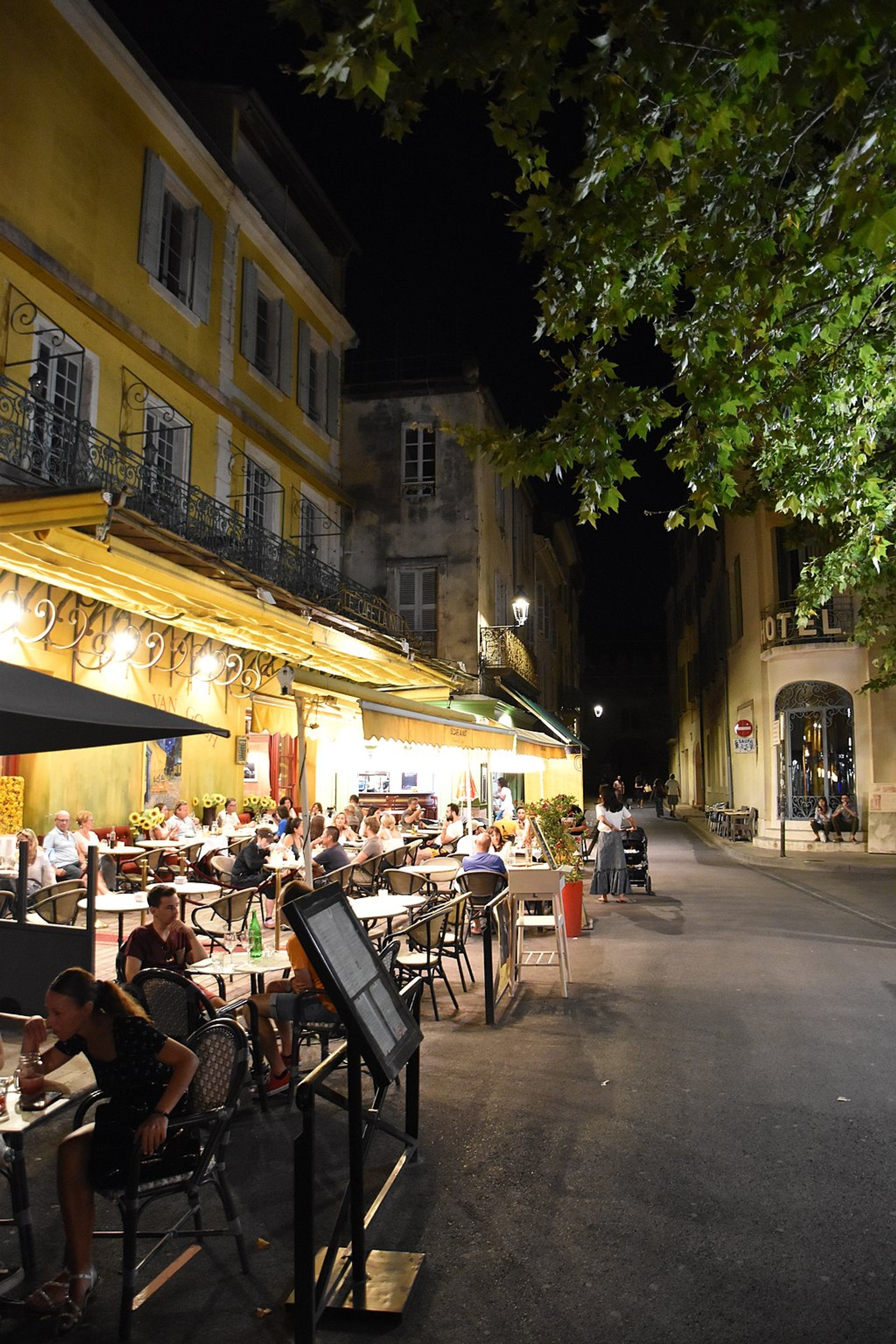
Café Van Gogh, Place du Forum, Arles
Photo: Pieter van Everdingen via Wikimedia Commons
The Place du Forum, the city centre for 2,000 years, is now filled with restaurant tables, usually packed with tourists on the Van Gogh trail. Although the Grand Café du Forum had become a furniture shop by the 1980s, it is once again a café - named, of course, after the city’s most famous resident.
The Kröller-Müller Museum’s Terrace of a Café at Night is not included in the National Gallery’s After Impressionism exhibition, although five other important Van Goghs are in the show.
Other Van Gogh news:
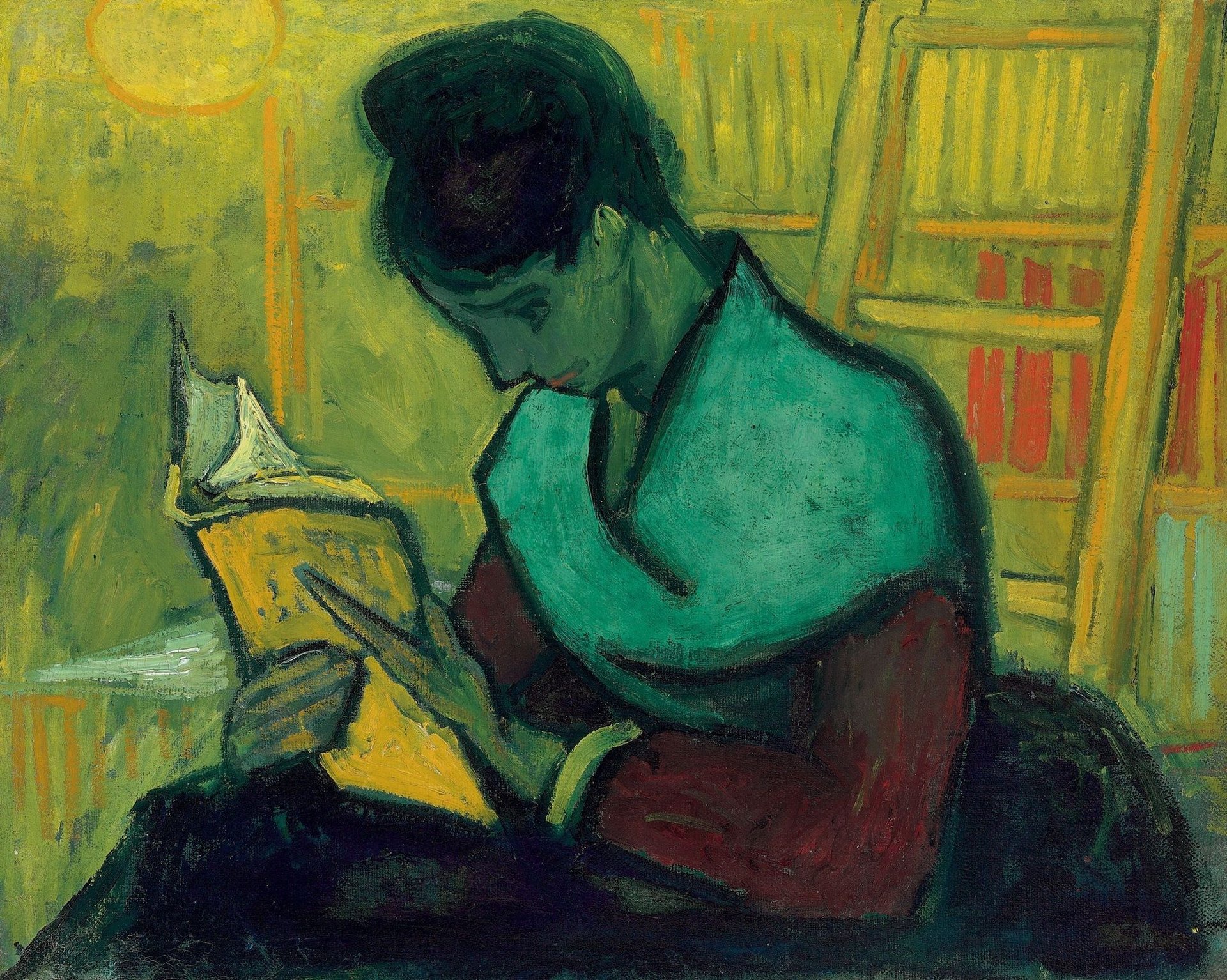
Van Gogh’s The Novel Reader (November 1888)
Credit: private collection
The ownership dispute over Van Gogh’s The Novel Reader (November 1888) appears to have been resolved. When recently on display at the Detroit Institute of Arts’ exhibition Van Gogh in America, a legal claim was launched by Miami-based Brokerarte Capital Partners to recover the painting, which had been lent by an unnamed collector in São Paulo. The Detroit museum found itself caught in the middle of the wrangle and was ordered by the courts to hold onto the painting after the exhibition’s closure in January. Brokerarte told the US Circuit Court of Appeals on 13 March that a confidential settlement has been agreed.


